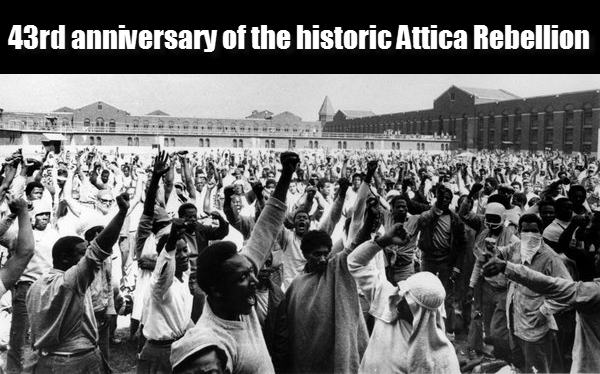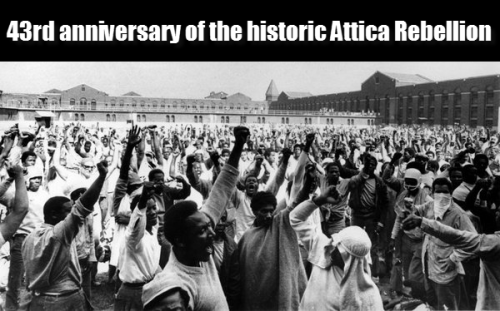
Critical Resistance: This week marks the 43rd anniversary of the historic Attica Rebellion

This week marks the 43rd anniversary of the historic Attica Rebellion. The commemoration makes us excited to share new work from Critical Resistance New York City (CRNYC): the Attica Interview Project. The Attica Interview Project, which utilizes oral history, video, audio recordings, and still images, was initiated by CRNYC to support prison closure organizing in New York.
At the time of the rebellion, the US prison population was less than 200,000. On the fourth day of the prisoner-led takeover of Attica, September 4, 1971, then-Governor Nelson Rockefeller deployed New York State Troopers to set murderous siege on the prison. A campaign of sustained terror and repression to restore the power of guards and administrators at Attica followed. The systematic attack against the gains won by struggles inside and outside prison walls, which nourished the spirit of revolt in Attica and the broader prisoner movement of the period, parallels the rise of the prison industrial complex to where we stand today. Few people then imagined that the imprisoned population in the US would explode to 2.4 million.
The Attica Rebellion developed not only in response to conditions of dehumanizing racism and violence in the prison, but was strengthened by the confluence of imprisoned revolutionaries from Black liberation, Native and Puerto Rican anticolonial, and anti-imperialist movements. The demands articulated by the Attica Liberation Faction unleashed an abolitionist imagination that continues to propel prisoner-led struggles up to today. Through oral history, the project seeks to document the legacy of repression, survival and resistance at Attica, while using material to shape a broader narrative about the PIC and abolition and fuel ongoing demands to close Attica.
Supported by sentencing reforms won through organized opposition to the Rockefeller Drug Laws and fights over deadly conditions in New York prisons and jails, prison populations in New York have decreased by 15,000 people since 2000. This decrease combined with the costs of maintaining staffing and infrastructure for empty prisons moved Governor Andrew Cuomo to close nine prisons in four years, with four more closures projected within the year. Although dispersed across the state and including both men’s and women’s prisons, what is common among these closure targets is their classification as minimum or medium security prisons holding people convicted of low-level drug offenses and “nonviolent crimes”. As we seize on any and all opportunities for prison closures, we understand the threat of cementing the “worst of the worst” classification for people held in maximum security, supermax and solitary confinement units and how the deepening of that logic enables the disappearance, dehumanization, torture and death of people in prisons everywhere. This criminalization is being amplified as prison-dependent economies, from the political representatives of prison towns to the 26,000 member guards’ unions (NYSCOPBA), desperately mobilize against decarceration and prison closures.
The stories of resistance, resilience, and struggle coming from the survivors of Attica and prisons across the country can offer not only a reminder of the history in which our movement is rooted, but a signal fire of which direction we should head. In the words of Attica Brother, LD Barkley, “The entire prison populace has set forth to change forever the ruthless brutalization and disregard for the lives of the prisoners here and throughout the United States. What has happened here is but the sound before the fury of those that are oppressed.”
In struggle,
Bryan Welton
Critical Resistance New York City member
[jwplayer mediaid=”6155″]